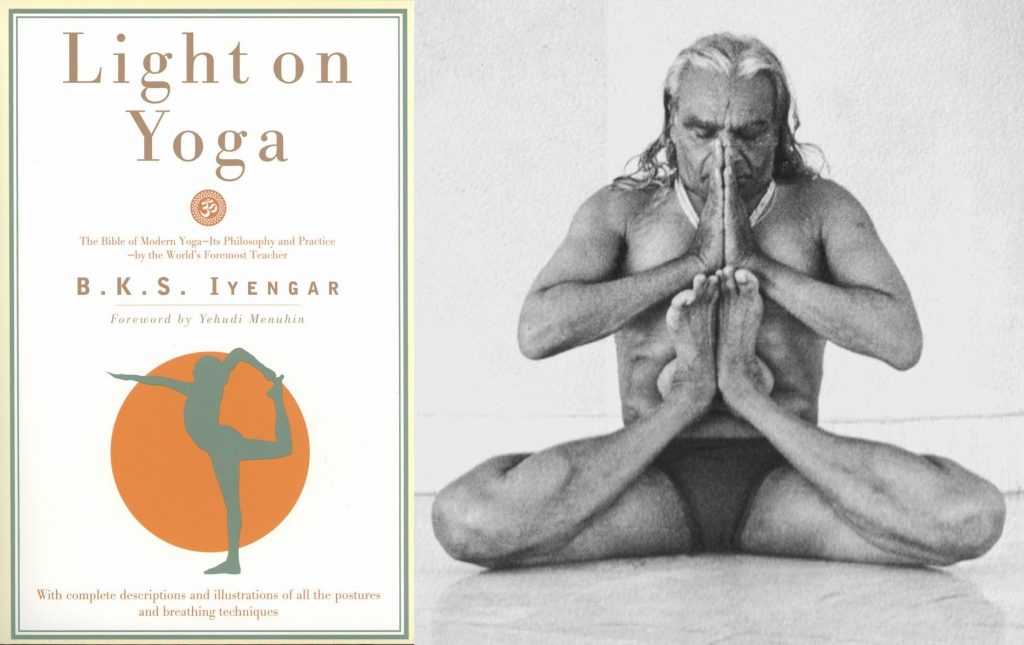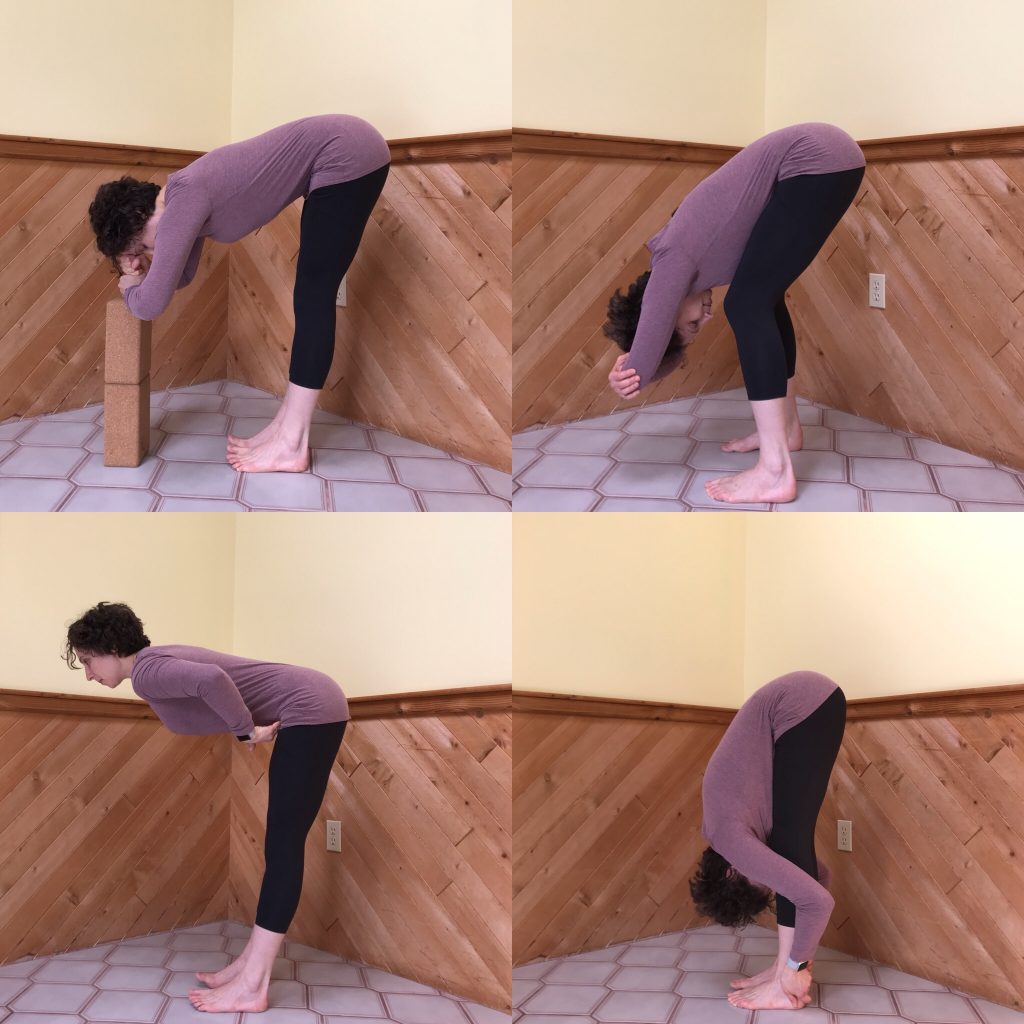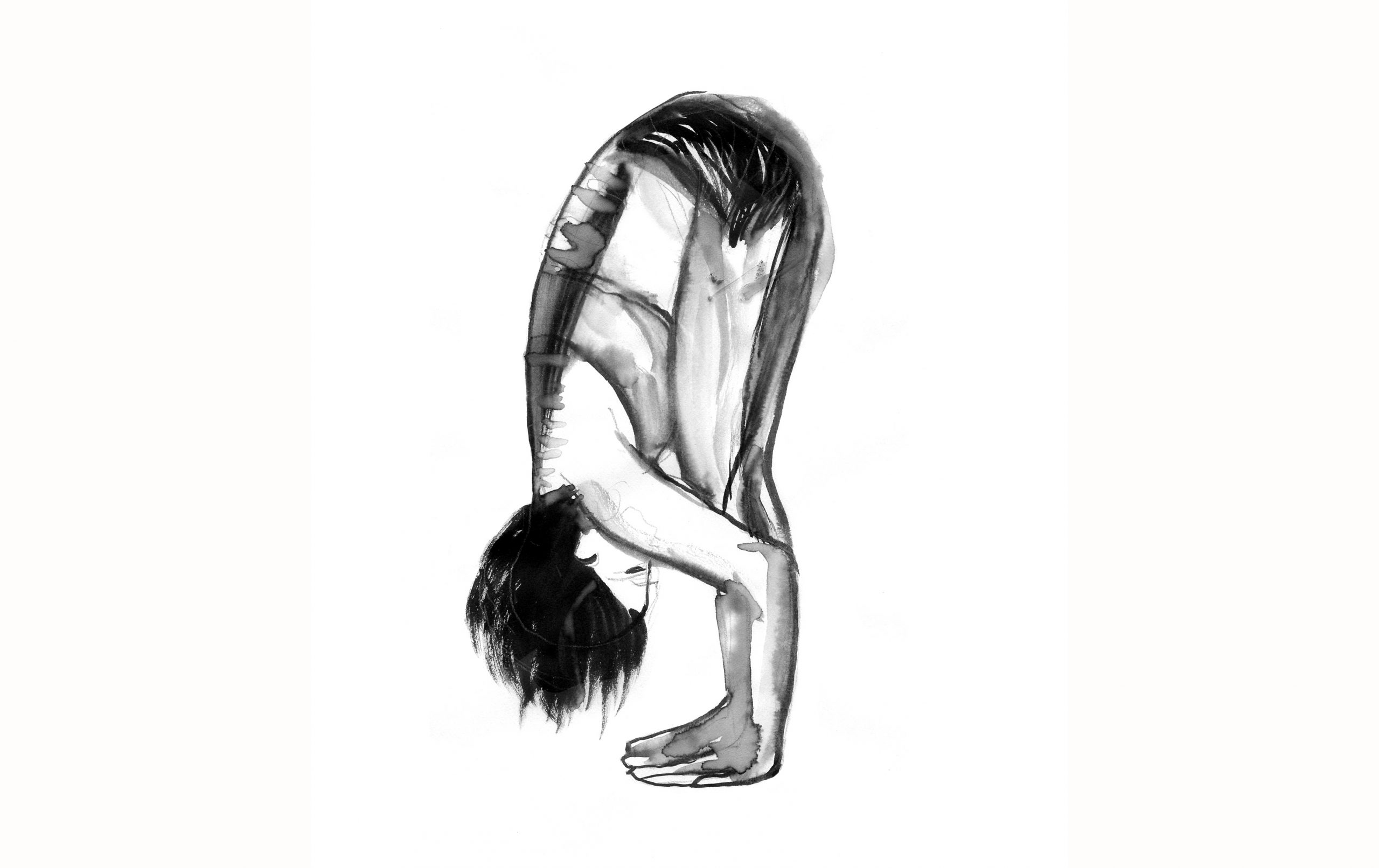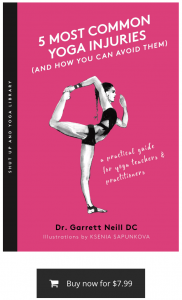I arrive early, as always, giving myself time to roll out my mat, adjust the lighting and the sound system, and open the cabinet of yoga props. Sometimes one or two mats have been strategically placed before I get there; most often there is a slow drift as the class enters the room little by little.
Light chatter fills these early moments: a casual conversation with the regulars about the weather, shoulders, and hips, kids young or old, or about books and shows. When new faces appear, I walk over with a set of blocks and a strap to introduce myself, asking their names and inquiring about any salient elements of their movement history and experience with yoga I should know about before class begins.
Then I tell the new student about the way I teach: I offer hands-on assists in class. Offer being the key word, because I know that some people love to be touched, and some people don’t, for all kinds of reasons! So along with the blocks and strap, I give each person a little glass stone. If you place the stone on your mat, I know that you welcome hands-on assists; if I don’t see the stone on your mat, I will be happy to support your practice in other ways but will be sure not to touch you.
Please Correct Me
The responses I get when people hear about the permission stones is so telling about the state of yoga as it is currently practiced in the US. Almost always I hear a variation of, “Please, correct me! I know I make mistakes all of the time. I can use all of the help I can get!”
(Where in that introduction statement do I ever say anything about corrections? Right, I don’t.)
These comments reflect the widespread and deep-set belief that there is only one right way to practice each pose, and that our bodies can and or should be pulled into that correct shape when they don’t get there on their own. That any other shape we may find ourselves in must be wrong, must require “correction.” And that the teacher is the expert on what your body should be doing, even if this is the first time he/she has ever met you.
So this may be surprising to hear, but I don’t offer hands-on touch for the purpose of pulling anyone deeper into a pose or to “fix” their alignment.
Let me say that again: I do not use touch to force bodies deeper into a pose or to pull them into “correct” shape.
I primarily use touch to foster connection, relaxation, and proprioceptive awareness (or your idea of exactly where your body is in space at any given moment.) So, for example, if we are standing in a bone-stacked version of Tadasana, Mountain Pose, and your hips are lining up over your toes, I might use touch to guide your hips backwards until they are stacked over your ankles. (Note that I call this one version of mountain pose rather than the only version or the correct version!) Or I might use touch when you are in child’s pose to help you develop awareness of your breath expanding throughout the full thoracic cavity so that the space between each of your vertebra can increase with your inhales, and decrease with your exhales.
What I’m not doing, though, is using touch to bring you into “the right alignment” or “the correct shape.”
Inhabiting the Pose
Why not?
Because, my friends, there is no such thing as the one correct alignment for any given yoga pose.
Most of what is taught as “correct alignment” in yoga classes is really about aesthetic appeal–about using the body to create shapes that are symmetrical, or that consist only of right angles, or that impress through pretzeling and strength demonstrated with clean lines.

The book in teacher trainings often touted as the asana-cueing Bible, Light on Yoga, was written by a man whose entire career was based on performance. That is to say, it was based on his ability to make shapes with his body that were pleasing to others (or to the camera).
There’s still much to give B.K.S. Iyengar credit for: for example, he also brought the use of props into the practice of yoga, making many poses more accessible to different bodies. But still, the classic alignment cues for Trikonasana, Triangle Pose, for example, are not about finding a Triangle that works well for your body. They are about using your body to create a specific shape. The exact same shape out of every body, regardless of whether or not that shape is going to be good for your body, today.
Here is the secret, my friends, that I wish every yoga teacher and every yoga practitioner knew: every pose can be inhabited in an almost unlimited number of ways, according to three main factors: 1. The one specific body moving through or settling into the pose, 2. The yogi’s intention for this particular practice, and 3. The intention for the pose itself.
This Specific Body
No two bodies practicing yoga are ever alike—not even if there are identical twins in the room. What our bodies need from, are capable of, or are limited by in any given pose is determined by a complex and extensive set of factors, of which genetic make up is only one part. Our lifelong health and injury histories play a huge role in what our bodies need, can do, and should do. So do our occupations, our hobbies, our commutes—all of the factors that determine our patterns of repetitive movement or holding of tension. Our fears and our motivations come into play here, as do our recent levels and quality of sleep, eating, exercise, and stress. It even matters who else is in the room and how comfortable we feel with them. And the list goes on, a whole slew of bio-psycho-social factors that determine how our bodies show up on any given day.
And we change! What I am capable of and limited by and will benefit from is not the same today as it was last week or as it will be in a month. So how I practice a pose today should not necessarily be the same as I practiced it yesterday or a month ago or last year. Even within a single day, or within a single yoga session, how I practice a pose can and should change, based on how warmed up or cold, tired or energized my body is.
In other words: The intensity and challenge levels of each pose are determined not by the pose itself, but by every other pose—every other move!—that came before it. And this is true not just on your yoga mat. How spinal extension feels—and what your body needs from spinal extension—differs based on the positions in which you slept the night before, how you have been holding tension, and what postures you have spent most of your day in before arriving to the yoga mat.
This Specific Yoga Practice
At the start of every class, I offer an opportunity to set an intention for your yoga practice. Often, people’s intentions fall along the lines of peace, relaxation, or stress relief. Sometimes it is strength. Patience. Joy. There is no wrong intention for your practice—it is whatever you would like to get out of your time on the mat, today.
But if your intention for your practice is peace or relaxation, how you approach a Vrkasana, Tree Pose, should be different than if your intention is strength.
For one intention, you might choose to keep your hands wherever you feel is most stable on your body, set your gaze on a fixed point, and let the sole of your lifted foot come down whenever you notice yourself holding your breath or working too hard. For a different intention, you might take your arms up to the sky, or let them and your torso sway around like the branches of a tree in a breeze; you might choose to challenge your propioception and balance by closing your eyes, or by shifting your gaze from point to point around the room.

There are no enlightenment points for choosing what might appear to be the “deepest” or “most advanced” (i.e., most aesthetically appealing or impressive) variation of the pose. Nor is there any one single option that is the best or “most correct” for all bodies at all times. There are only the options that make the most sense for your body and your intention for practicing today.
The Intention Behind the Pose
I want to let you in on one of yoga’s most well-kept secrets: every pose can be worked—and worked differently!—to achieve a wide variety of physical intentions.
Let’s take Uttanasana, a standing forward fold, as an example. Most often, people assume that forward folds are about lengthening through the hamstrings. And it’s true: you can keep your legs straight as you fold forward, reaching your tailbone towards the sky, and you will find length through the hamstrings.
Even here, however, intention matters. You can lengthen through the hamstrings as a passive stretch, letting the weight of gravity do the work for you. And that might be the perfect thing to do, especially if the pose is serving as a rest or reset between sequences! But you can also choose to work eccentric strength through the hamstrings as they lengthen– and hamstring strength is something that everyone who spends too much time sitting needs to work on! Hinge from the hips s-l-o-w-l-y, and send the hips slightly backwards as you lower down, resisting the effect of gravity the whole way. This is an entirely different experience of the pose, based on a very different intention for using it.

These are just two possible options based on working hamstring length in different ways. Neither one is the correct way to practice. They simply serve different purposes.
And there are so many other things you could choose to work on in a forward fold! You might be interested in separating hip hinge from rounding through the low back. Or in allowing your spine to lengthen with the help of gravity to create space between the vertebra. Maybe you want to drop your head down below your heart for a moment. Or perhaps you are simply passing through the pose, using Uttanasana as a way to transition as you flow from standing to a lunge or a squat.
You could even have an entire class or workshop sequenced simply around forward folds (not that I necessarily recommend this!), exploring as many different ways to inhabit the pose and opportunities for work or rest as you can imagine. None of them would be wrong—although you might find some that are wrong for your body today, or that are wrong for your personal intention for this practice session, or that are wrong for the stated reason for being in the pose. None of them would be more correct.
Your Practice, Your Pose
As a practitioner taking a class, you don’t always need to know what the intention behind the pose is. But the teacher leading the class should know and be able to articulate why he or she has chosen each pose, what it is that he or she would like you all to get out of it, and how it fits together with all of the poses that came before it and that will come after it. That knowledge, that why for each pose, should determine the way the pose is cued– and the way it is experienced.
Even so, you, the practitioner, are always in charge of your own body, your own experience. If I am teaching a class centered on hamstring and gluteal strength today, but yesterday you moved and did a lot of squatting while lifting heavy objects, or you skied all day, or you are feeling run-down and your intention is to relax rather than work hard, you can choose to inhabit the poses differently! You can choose what to work on, and what to let go of.

This can be a little difficult if you’re new to yoga or not used to taking charge like this, so when teaching, I will sometimes bring a class into or towards a pose, and then offer a whole series of options, each one working something different. I do this not because I want you to try each one of them as I offer them, but because I know that we all come to our mats from different places, in different bodies, and with different needs. And even for more experienced practitioners, a reminder of different options to focus on can be helpful. Most often the whole class wants to come with me, from the first option all the way to the last one, but no single option is the correct or best one. They are simply different destinations.
Your yoga practice is a journey, not a test. You choose where you are going, and what path you are taking to get there. And a good teacher is just the tour guide, delighted to point out some of the sights you can explore along the way.

Illustration by Ksenia Sapunkova
Edited by Jaimee Hoefert



